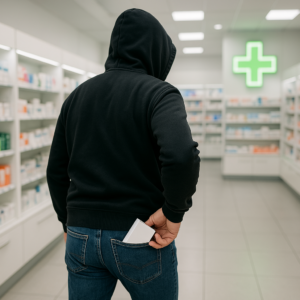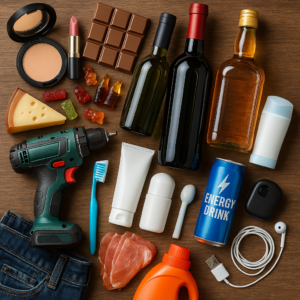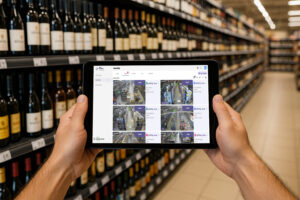Fighting shoplifting is a major challenge for retailers, who are constantly seeking to protect their products while providing an impeccable customer experience. In general, two main categories of solutions are implemented: video surveillance systems and anti-theft systems . In this article, we’ll explore these technologies, how they work, and how they can be optimised thanks to innovations in Artificial Intelligence.
Traditional CCTV cameras remain a cornerstone of security in retail. They make it possible to view and record suspicious behaviours, often serving as an effective deterrent. However, their efficiency relies heavily on human vigilance, which can lead to errors or delays in response.
AI-powered video surveillance is transforming this approach. Thanks to behavioural analysis, AI detects in real time the gestures specifically associated with shoplifting. Oxania offers solutions capable of automatically spotting suspicious actions, cutting down on losses and freeing up time for security teams.
🎥 Video Surveillance Systems
CCTV cameras are the first line of defence against malicious behaviour. Installed at strategic points, they cover sensitive areas such as checkouts, high-value aisles, or exits. Their presence is a deterrent, and recordings can serve as evidence. However, they require constant human monitoring for maximum efficiency, which can represent a significant cost for retailers.
That’s where AI-driven video surveillance comes in. Rather than relying solely on human attention, smart systems automatically identify anomalies in behaviour. For example, gestures such as concealing items under clothing or repetitive movements around a shelf can be detected and flagged in real time. Oxania provides AI technologies that incorporate these features.
By combining traditional recordings with intelligent analysis, retailers gain in reactivity and efficiency, while maintaining customer privacy thanks to precise behavioural analysis settings.
🔒 Anti-Theft Systems
Traditional anti-theft systems , which complement video surveillance, allow for physical intervention during theft attempts. Anti-theft tags , whether adhesive or hard, are attached to high-risk products. When someone tries to leave the store without deactivating the tag, an alarm automatically sounds thanks to the gates installed at the exit. This simple yet effective system is now widely used across all sectors, from fashion to DIY.
Among security gate technologies, there are three main categories: radio frequency (RF) gates , electromagnetic (EM) gates , and acousto-magnetic (AM) gates . Each type has its strengths depending on the nature of the items protected and the shop’s layout. AM systems, for instance, are particularly resistant to interference and are well suited to high-traffic environments.
In addition, specific devices such as anti-theft badges and bottle security tags are used to protect highly targeted products. Bottle security tags are very popular in the food and beverage sector, as they protect bottles effectively without affecting their visual presentation.
🚀 Towards Enhanced Security through Innovation
The future of loss prevention undoubtedly lies in integrating smarter technologies, capable of combining physical monitoring with automated behavioural analysis. Retailers who take a proactive approach and invest in modern solutions such as those provided by Oxania see a reduction in shoplifting.
With smart analysis of gestures associated with shoplifting , security teams can focus on genuinely problematic situations rather than watching screens for hours. This improves operational efficiency and reduces workplace stress, all while strengthening asset protection.
Adopting solutions that combine intelligent video surveillance and effective anti-theft systems has become an essential strategy for any retailer wanting to combine security, smooth customer experience, and improved profitability. The path to safer, more welcoming shops lies in smart innovation.





